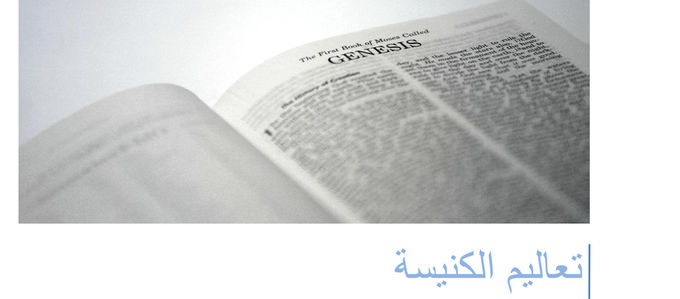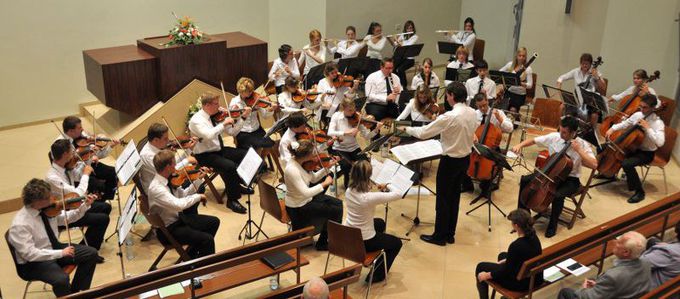
The subtitle of the new magazine of the New Apostolic Church says it all: “The New Apostolic Church around the world”. After English, French, and Spanish, additional translations are now ready for distribution. The peculiarities of the Arabic edition are especially interesting.
Anyone used to the Latin script will likely open the Arabic “community” the wrong way around. Arabic is not only written from right to left, but also the pages run contrary to what most of us are used to; namely back to front. By Western standards, the magazine begins at the back. And the pages are not stapled on the left, but on the right.
Culture transfer means extra work
This is nothing unusual for Emil Mansour. He grew up in a home in Israel in which four languages were spoken: English, French, Hebrew, and Arabic. Now he lives in the Black Forest in Germany and works for the New Apostolic Church Southern Germany as a translator.
The peculiarities of Arabic typography can be quite challenging for Evangelist Mansour. Although nowadays it is easy to change spell-checks on the computer from one language to another, the page sequence of the magazine has to be reversed and the layout often has to be mirrored.
Not only for the Near East
The largest part of the Arabic edition goes to Israel. A good twenty per cent of Israel’s population is of Arabic descent. Also benefiting are the brothers and sisters in Lebanon, in the United Arab Emirates, and in Egypt. And the odd copy even goes to North America and Europe.
The circumstances and living conditions of his customers are nothing new to Evangelist Mansour. He not only grew up in the Near East, but has also done many years of missionary work in the region. As Christians, the members of the New Apostolic Church there belong to a minority group. This can mean disadvantages not only in matters of religion, but also in matters of everyday life.
Three days of services in a row
In any case, the cultural diversity in the region is something that has to be taken into consideration. One curious aspect is the weekly day of rest. What Sunday is to a Christian is Saturday for a Jew and Friday for a Muslim. Depending on the region, the divine services are scheduled in accordance with the dominant religion.
For Evangelist Mansour this has definite advantages because he can plan his round trips efficiently and visit the different congregations one after the other: Friday, Saturday, and Sunday. As a result, he sometimes conducts up to seven divine services in three days.
West Africa has its own regional section
For Lothar Heim, the Arabic “community” is one of his smaller projects. The District Evangelist is, among other things, the publications coordinator of the New Apostolic Church Southern Germany. While the circulation for the Arabic-speaking regions is in the three-digit range, the circulation for the West African countries cared for by the District Church reaches more than 47,000.
Ghana, Togo, Benin, Nigeria, Equatorial Guinea, Gabon, Cameroon, Guinea, Sierra Leone, Liberia, and Ivory Coast receive the new magazine in English, French, and Spanish. While its Arabic sister is photocopied and then posted to its readers, the West African editions—including a four-page regional section—are printed. Printing shops in Ghana, Nigeria, Cameroon, Guinea, and Sierra Leone have been assigned with this.
Around the world in nearly 40 languages
But even this reflects only a small part of the worldwide information network. The Indonesian edition of “community” in the national language of Bahasa, for example, has just come off the press. Additional translations are in progress.
Some District Churches produce the entire 32 pages while others publish only the 12-page core community. This core contents also flows into “African Joy” and the German magazine “Unsere Familie”, which continue to be the official magazines of the New Apostolic Church in Africa and in the German-speaking countries respectively. In this way, the core content is published right around the world in nearly 40 languages.






























